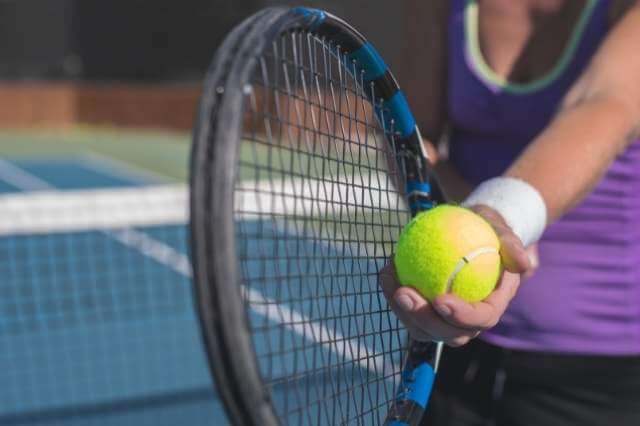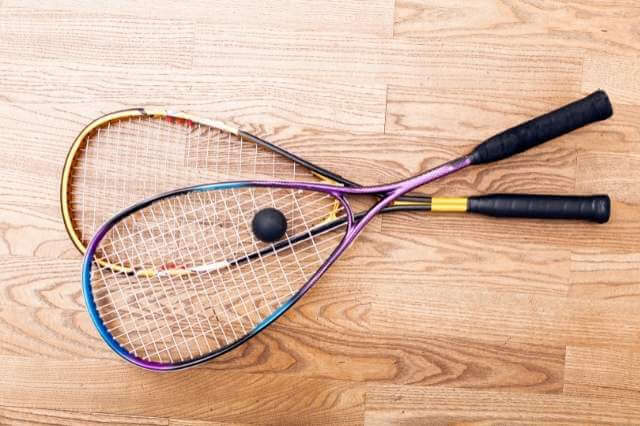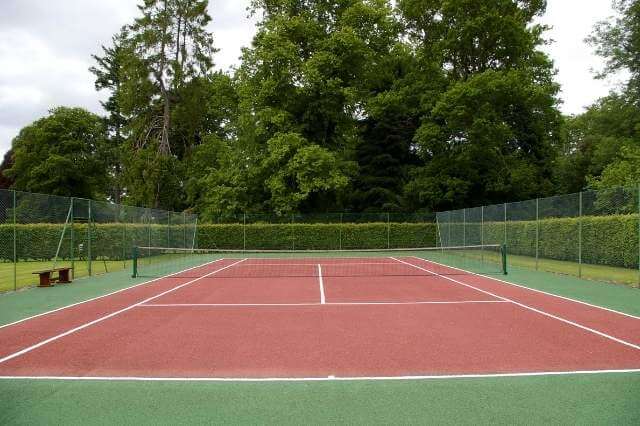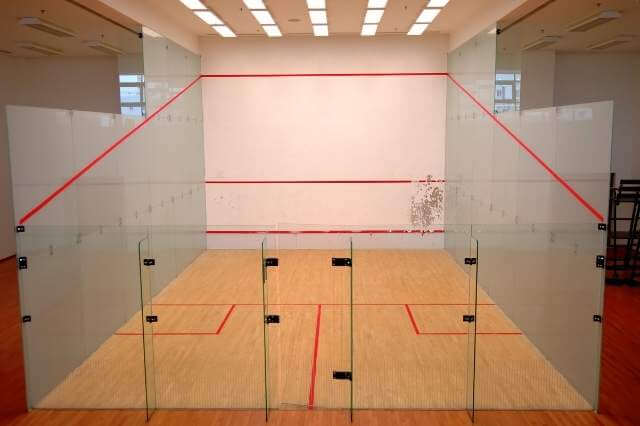Do you play tennis or are you a sports enthusiast who has a tennis racket and wants to use it to play squash?
A player who excels at one sport may frequently pick up another and advance to a competitive level there as well, which is excellent news for individuals who play racquet sports.
Table of Contents
Difference Between a Tennis and a Squash Racket?
After participating in both sports, I can say that aside from the varied regulations and playing methods, the racket designs are one of the most noticeable variations.
The size, form, and weight of the rackets varies significantly between squash and tennis.
I’ll look at some of the distinctions between squash and tennis rackets in this post.
Tennis Rackets
Tennis rackets have an egg-shaped head with a disproportionately high width to length ratio.
Originally made of wood, they later switched to aluminum, and as of late, graphite has become the standard.
The size of the frame and the striking area are the only actual limitations when utilizing a tennis racket.
The tennis racket should not be broader than 12.5″ or longer than 29″ (73.66 cm) from the tip to the bottom of the handle (31.75cm).
It should have a level striking surface with a crisscross string pattern that is no wider than 11.5″ (29.2 cm) or longer than 15.5″ (39.4cm).
Squash rackets are lighter than tennis rackets.
The weight ranges from 285 grams (10 oz) to 310 grams (11 oz), with 300 grams (10.6 oz) being the average weight.

Squash Rackets
The heads of squash rackets are tear-shaped or oval.
Like tennis rackets, their maximum size are governed by certain regulations.
The maximum size should be 8.5″ (21.5 cm) broad and 27″ (68.6 cm) long from head to toe.
Maximum size for the striking area should be 77.5 square inches (500 sq cm).
This demonstrates that despite tennis rackets being wider, their lengths are comparatively equal.
The weight of squash rackets may vary quite a bit; the highest permissible weight is 255 grams (9 oz), although this is quite uncommon since most rackets weigh between 90 and 150 grams (3-5.3 oz).
Consequently, squash rackets are often much lighter than tennis rackets.
This is partially due to the fact that the ball is lighter and the method for playing the sport is very different.
Additionally, when playing squash, you are quite near to your opponent, so if you were accidentally struck by a big racket, the agony would be much worse!

Can One Use a Tennis Racquet to Play Squash?
The simple answer to this is no; if you want to play squash consistently, it’s advisable to get a squash racket rather than using your tennis racket for squash as well.
The weight of the rackets and their interconnectedness are two of the main deterrents to utilizing tennis rackets for squash.
For reference, depending on the type of player you are and the racket you have chosen, a tennis racket normally weighs between 8 and 12+ ounces, or 225 and 340 grams.
Tennis rackets are much heavier than squash rackets.
The weight of a squash racket is typically approximately 150 grams, give or take a few grams depending on the player.
This weight disparity may lead to two significant problems for squash players, which is also why squash shouldn’t be played with a tennis racquet.
Tennis Court vs. Squash Court
The largest distinction between squash and tennis is frequently noted to be the court.
Players must volley the ball over a net in the middle of an open tennis court. The court is divided into two equal half by the net.
Flat, rectangular spaces make up tennis courts. For singles matches, the court measures 78 feet long and 27 feet wide.
Tennis matches can be played on grass, clay, or acrylic material, depending on the court’s surface.
A squash court is very different since it is a contained space where players strike the ball against the walls.
Players volley the ball back to their opponent into the front wall after serving it into the wall.
All four walls are susceptible to the ball’s impact or ricochet.
Typically, rubber or wood are used as squash court surfaces.
A squash court is significantly smaller than a tennis court in size.
A court measures 32 feet in length and 21 feet in width.
A squash court needs to be enclosed by four walls in order for the game to be played, unlike a tennis court where the ball can go in any direction.
Similar to tennis courts, squash courts have distinctive markings. The front and rear areas of the court are separated by a front line.
The left and right sides of the court are divided by a half court line as well. The squash court is divided into three distinct boxes by the lines.
Services boxes are located inside the boxes on the left and right sides.
Players stand in these service boxes when serving the ball to their opponents.
Surprisingly, the serve is the only time the squash floor’s lines matter. The markings become meaningless once the ball is in play.

Playing Squash and Tennis
Do tennis and squash have comparable rules and game play?
The answer to this is no, as each game has an own set of rules that determine how it must be played.
Even if there are some similarities across the games, they are all distinct.
Tennis matches are best-of-three matches where players strive to win.
After their opponent smashes the ball, tennis players have a maximum of one bounce to return a shot.
Staying inside the lines of the court, the ball must be hit over the net.
A point is given to the other team if the player is unable to keep the ball in, send it over the net, or strike it after one bounce.
To win, a player needs four points. The players continue until one has a two-point edge, but, if the score is deadlocked.
Tennis scoring is comparable to squash scoring, however the two sports play differently.
The best of three or five games determines a squash match.
The competition, tournament, or regulatory body in charge of the match will typically select how many games will be played.
Tennis is played to four points, whereas 11 points are used in squash.
The winner of the game is the first player reaching 11, although, like in tennis, they must prevail by two points.
The largest variation is in the score. Whether or not they are serving the ball, a squash player can score.
Following a rally, the player who scores a point assumes the role of the server.
For instance, player A will receive a point and keep serving if he or she serves the ball and wins the rally.
Player B becomes the server if Player B gets the services and scores the point.
The serve is a crucial aspect of the game of tennis. If they blast the ball past their opponent, they can serve the ball and earn an ace.
The squash service varies from what it was. The serve in squash is used to kick off the rally.
The players intentionally play the ball knowing that they are unlikely to score from the serve. To serve the ball, players stand in the service box.
Between the service line and the out line, the served ball must strike the front wall.
In order to strike the front wall, players must be precise and controlled.
As a result, serving with force might stop the ball from landing at the proper location.
The server cannot touch the line while making the serve and must have at least one foot in the service box.
The ball must be served so that it strikes the front wall and lands in the opposing rear corner of the court.

FAQs
What Is the Lifespan of a Squash Racket?
A squash racket should last a few years, comparable to a tennis racket, depending on how often you play and your playing style.
What Is the Lifespan of a Tennis Racket?
It depends. The two key determinants are how frequently you play and your playing style, but as a general rule, a racket should last at least two years before you need to consider replacing it.
Final Thoughts
Tennis and squash are two separate sports, despite the similarities.
The two games are different in many ways than only the fundamental gameplay and guidelines.
Although they both originated from the classic game Rackets, they have evolved into two thrilling sports that are adored by millions of people.
Using a tennis racquet or any other racket while playing squash is not a good idea.
Doing that involves far too many problems, and the benefits—outside of avoiding initial expenses—are negligible.
The possibility of short- and long-term injuries brought on by using such rackets might end your career, as well as that of your opponent, which strengthens the case against using a non-squash racket.

